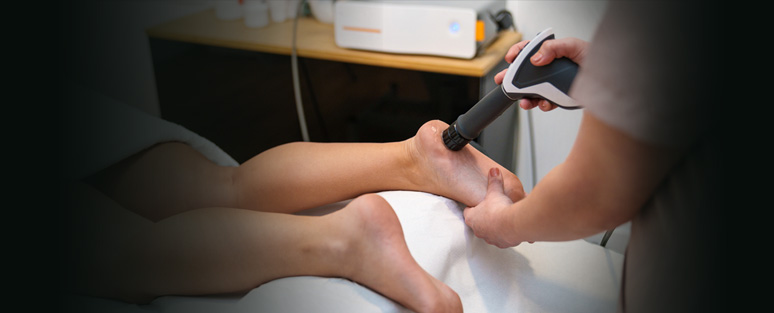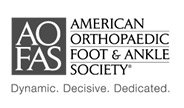 Normal Orthopedic function requires that all "systems" are working, Nerves, Muscles, tendons, and Joints. Loss of function or difficulty with activity can be the result of a problem anywhere along this pathway. In this segment, we will focus on one component of this pathway, the dysfunction of which will limit activity; joint function. Joint function can be impaired for multiple reasons, but in this segment, we will focus on Osteoarthritis (OA). Osteoarthritis involves a cascade of events that leads to the destruction of joints. In many cases, we can determine the problem that initiated arthritis, but in some cases, we cannot. Knowing the reason can help guide the management of arthritis, slow its progression, slow the destruction, and maintain function. Rapid progression means that function can be rapidly impaired. Slow progression means that we can maintain function, and stay active for a much longer period of time with our joints intact.
Normal Orthopedic function requires that all "systems" are working, Nerves, Muscles, tendons, and Joints. Loss of function or difficulty with activity can be the result of a problem anywhere along this pathway. In this segment, we will focus on one component of this pathway, the dysfunction of which will limit activity; joint function. Joint function can be impaired for multiple reasons, but in this segment, we will focus on Osteoarthritis (OA). Osteoarthritis involves a cascade of events that leads to the destruction of joints. In many cases, we can determine the problem that initiated arthritis, but in some cases, we cannot. Knowing the reason can help guide the management of arthritis, slow its progression, slow the destruction, and maintain function. Rapid progression means that function can be rapidly impaired. Slow progression means that we can maintain function, and stay active for a much longer period of time with our joints intact.
Navigating Osteoarthritis of the Foot and Ankle
Welcome to my guide on understanding and managing osteoarthritis (OA) of the foot and ankle. As a Fellowship Trained Foot and Ankle Orthopedic Surgeon, I am pleased to provide you with valuable insights into this common form of arthritis that can impact your daily life. Let's embark on a journey to understand the general complexities of OA and explore effective management strategies for a better quality of life.
Unveiling OA: Understanding its Impact on Foot and Ankle Anatomy
Joints serve as crucial meeting points for bones, enabling fluid movement. While tendons linked to muscles aid in movement, ligaments hold joints in alignment, and cartilage allows for shock absorption and fluid, resistance-free movement of the joint. OA disrupts this complex system, causing damage to the cartilage, leading to pain from less shock absorption, limited motion, swelling, and, in the last stages, bones rubbing against each other during movement because the cartilage has been destroyed.
Examining the anatomical workings of the foot and ankle is crucial for understanding how OA exhibits in these regions. Whereas, the hip and knee are commonly involved in arthritic change due to "wear and tear" damage based on lifestyle and occupation, the ankle joint is highly resilient to stress. Because of this, it is not a "wear and tear" joint, and so Ankle Arthritis, though highly debilitating, is less common than arthritis of the hip or knee. The fact is that it takes a lot to alter the ankle. Ankle arthritis is initiated primarily by trauma such as fractures and recurrent ankle sprains, conditions that result in greater than usual inflammation such as autoimmune conditions, inflammatory conditions such as Rheumatoid Arthritis or Gout, metabolic conditions such as hemochromatosis, or hereditary arthritis.
The foot itself is also unique in that, excluding "extra bones", there are 28 major bones that are present in all feet, and even more joints, 31 - 35, not all of which were meant to move. It may be confusing to consider having arthritis in a joint that does not move, but many joints of the foot are present for shock absorption only, as weight is transferred from the heel to the toes. And whereas they function normally by not moving and only absorbing shock, when they become arthritic and the ligaments holding them rigid loosens, and the cartilage degrades, it is motion and the loss of shock absorption that results in pain and dysfunction.
Osteoarthritis alters the normal cycle of joint damage and repair, affecting not only the cartilage but also causing harm to bones, ligaments, tendons, and the joint lining in ways that may seem counter-intuitive in the foot.
Managing Symptoms
While OA can affect anyone, it is more common in individuals over 45, with a higher prevalence among women. Contributing factors include genetics, joint injuries, and conditions such as rheumatoid arthritis or gout.
And because if the complexities of the foot and ankle, OA doesn't conform to a one-size-fits-all approach; its impact can vary among individuals. However, common symptoms include pain, swelling, and stiffness in the affected joints, as well as irritation to adjacent structures, such as nerves.
The great toe, frequently targeted, may appear larger than normal, accompanied by audible noises like grinding or crunching during movement, and ultimately a loss of motion that affects activity that requires a deep bend of the joint- such as while kneeling or running.
For those with ankle involvement, weakened ligaments may lead to increased strain on cartilage. Over time, muscles around the ankle may weaken, making walking or weight-bearing painful. The repair process in OA can prompt the formation of osteophytes or bone spurs, altering joint shape. Occasionally, bone and cartilage fragments can float inside the joint, exacerbating pain and swelling. Bone spurs in the front of the ankle limit motion that requires a deep bend, such as a downward dog, squatting, or stooping.
If you suspect osteoarthritis (OA) in your foot or ankle, it's crucial to seek a medical diagnosis. Contrary to certain concerns, obtaining a medical diagnosis and undergoing proper treatment may lead to improvement in managing this condition non-operatively.
Potential Complications
Left untreated, OA can lead to complications affecting the feet. Conditions such as hallux rigidus, where cartilage loss and spurs, can impede toe movement, making walking challenging. Bunions may develop, causing instability and discomfort, while corns and calluses, often related to bunions, can further complicate matters. Athletic functions and even shoes can become challenging.
Comprehensive Management Strategies: From Exercise to Medications
Managing OA involves a holistic approach, ranging from lifestyle adjustments to medical interventions.
Exercise:
- Incorporate stretching exercises for maintaining joint movement
- Engage in strengthening exercises to support muscles and joints
- Include exercise like cycling or brisk walking for overall health
Regular physical activity is essential. Consult your primary care physician for advice and possible referrals to a physical therapist or hydrotherapy sessions.
Weight Management:
- Losing weight reduces strain on foot and ankle joints
- Adopt a healthy diet and exercise regimen with the guidance of your primary care physician
Effective weight management positively impacts overall health and can alleviate OA symptoms.
Foot Care:
- Wash and moisturize your feet daily, paying attention to areas between the toes
- Regularly trim toenails straight across to prevent ingrown toenails
- Address corns and calluses with appropriate care
Regular foot check-ups, either through your primary care physician or a podiatrist, are crucial for preventing additional problems.
Footwear:
- Choose comfortable shoes with a low heel and wide front
- Have shoes professionally fitted, considering changes in foot size
- Avoid shoes that do not provide adequate support
Appropriate footwear significantly contributes to minimizing stress on joints and preventing further damage.
Medications:
- Over-the-counter painkillers like acetaminophen can alleviate pain and stiffness
- Non-steroidal anti-inflammatory drugs (NSAIDs) help with pain and inflammation
- Stronger prescription anti-inflammatory medication may be necessary in some cases
Discuss medication options, potential side effects, and suitability with healthcare professionals.
Coping with Low Mood:
- Explore pain management sessions and talking therapies
- Consider mindfulness and cognitive-behavioral therapy (CBT) for emotional well-being
- Prioritize activities promotion relaxation before bedtime
Pain management extends beyond physical aspects, addressing emotional well-being and sleep-related challenges.
Medical Evaluation:
- Consult a Foot and Ankle Orthopedic Surgeon for specialized foot care
- Receive advice on footwear and suitable treatments
- Evaluation of the underlying issues, such as chronic ankle instability or frequent sprains, can be vital to limiting the rapid progression of arthritis.
Medical evaluation can play a vital role in managing foot-related complications, offering treatments such as strapping, padding, and insoles.
Aggressive In-Office Non-Operative Interventions:
- Shockwave Therapy can help alleviate pain to ligaments
- Orthobiologic Therapies such as PRP or stem cells can help to stave off the rapid progression of arthritis in some patients and can aid in joint health and inflammation.
Surgical Interventions:
- Arthroscopy and debridement: Keyhole surgery to remove bone spurs
- Fusion: Joining bones to alleviate joint problems
- Ankle replacement: Replacing damaged joint surfaces, allowing for continued ankle motion
- Bunion surgery: Removing bunions and realigning toes
Surgery is a last resort if other treatments prove ineffective. Each option comes with considerations, and consultation with a surgeon is imperative.
In Conclusion
OA of the foot and ankle is a complex condition demanding a comprehensive approach. From understanding its structural impact to adopting a range of lifestyle adjustments, individuals can effectively manage symptoms and enhance their overall quality of life. A personalized plan, involving healthcare professionals, ensures optimal care tailored to the unique needs of everyone facing OA in their lower extremities.
Click Here to schedule a consultation with Dr. Natalie Mesnier at Multnomah Orthopedic Clinic. Your orthopedic health is her priority.














